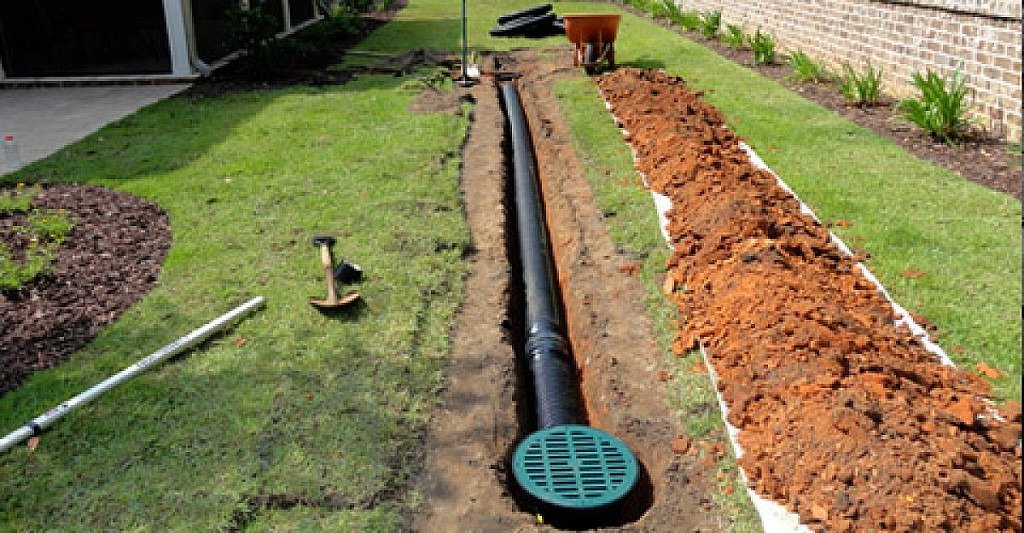Introduction: Why Water Flow Problems Shouldn’t Be Ignored
Water pooling in your yard, soggy soil, or a basement that constantly floods after rain—these aren’t just minor annoyances. They’re signs of poor drainage, and if left untreated, they can lead to structural damage, mold growth, and ruined landscaping.
Whether you’re dealing with water runoff from heavy rains or improper sloping around your property, one of the most effective long-term solutions is to improve how water drains from your land. This is where smart groundwork solutions, including drainage excavation, come into play.
Understanding the Root of Water Flow Issues
Before you can solve a drainage problem, you need to identify the cause. Poor water flow around a property usually results from one or more of the following:
-
Improper grading or sloping of the land
-
Compacted soil that doesn’t allow water to absorb
-
Overflow from downspouts or gutters
-
High water table or underground springs
-
Poorly designed or clogged drainage systems
While minor issues can sometimes be fixed with simple surface grading or gutter adjustments, more severe problems typically require professional drainage excavation to create proper water pathways below the surface.
What Is Drainage Excavation?
Drainage excavation refers to the process of digging trenches or reshaping the land to redirect water away from areas where it collects. This process often includes:
-
Digging trenches for French drains or piping
-
Installing stormwater pits or soak wells
-
Regrading slopes to guide water naturally
-
Excavating areas for retaining walls or swales
Excavation provides the necessary depth and structure to permanently guide water to designated drainage points, ensuring it flows efficiently without damaging your property.
Signs You May Need Drainage Excavation
If you’re unsure whether excavation is needed, look out for these telltale signs:
-
Persistent puddles in the same areas after rainfall
-
Water seeping into your basement or crawl space
-
Soil erosion around your foundation
-
Visible mold or mildew near the ground level
-
Cracks in driveways or paths due to shifting soil
These signs suggest that water isn’t being properly channeled away, and the underlying issue likely lies beneath the surface.
Smart Groundwork Solutions That Work
Not all drainage problems require major construction. However, when excavation is necessary, combining smart planning with proper groundwork techniques can solve even the toughest water flow challenges.
1. French Drains and Subsurface Piping
A common and effective method, French drains involve digging trenches filled with gravel and perforated pipes. These systems collect water from the soil and redirect it away from the home or yard.
A well-planned drainage excavation ensures these pipes are installed at the right slope and depth to function effectively year-round.
2. Surface Grading and Re-sloping
Even subtle slopes in your yard can guide water away from your home. Groundwork crews use excavation tools to reshape the landscape, ensuring water flows naturally toward stormwater drains or garden beds designed to absorb excess moisture.
3. Swales and Retention Basins
In areas where water runoff is unavoidable, excavated swales (shallow ditches) or retention basins provide a safe place for water to collect and gradually absorb into the soil. These solutions are eco-friendly and visually unobtrusive when landscaped properly.
4. Stormwater Management Systems
Advanced drainage systems often include catch basins, sumps, and underground pipes. Drainage excavation makes space for these systems to be installed under lawns, driveways, or gardens without compromising surface aesthetics.
Residential vs. Commercial Drainage Needs
Drainage needs can vary widely depending on the size of the property. Residential properties usually deal with runoff from roofs, driveways, and patios, while commercial sites must manage larger volumes of water from parking lots and flat rooftops.
In both cases, professional excavation plays a key role in creating a long-term solution that meets local building codes and environmental standards.
The Role of Professionals in Drainage Excavation
While it’s tempting to attempt DIY drainage fixes, excavation work demands experience, precision, and the right equipment. A qualified contractor will:
-
Analyze the site’s water flow patterns
-
Assess soil composition and slope
-
Design a custom drainage system
-
Use appropriate excavation machinery
-
Ensure compliance with local regulations
Professional excavation also minimizes disruption to your yard and ensures the new system will perform reliably for years to come.
Benefits of Proper Drainage Excavation
Investing in drainage excavation may seem like a big step, but the benefits are clear and long-lasting:
-
Prevents structural damage to your home or building
-
Improves landscape health by reducing waterlogging
-
Increases property value with better aesthetics and functionality
-
Protects driveways, sidewalks, and outdoor spaces from erosion and shifting
-
Minimizes mold growth and pests that thrive in damp areas
When done correctly, these improvements can save thousands of dollars in future repairs and increase the safety and comfort of your living space.
Cost Considerations and Planning
The cost of drainage excavation can vary widely based on:
-
Size of the area to be excavated
-
Depth and complexity of the system
-
Soil type and condition
-
Equipment and labor needs
-
Type of drainage system installed
To stay within budget, request a detailed site assessment and written quote. Many contractors also offer design-build services, which streamline planning and reduce costs.
Final Thoughts: Long-Term Solutions Start Below Ground
Solving water flow issues is more than just a surface-level fix. If you’re dealing with recurring water problems, it’s worth considering drainage excavation as a long-term, effective solution.
By addressing the root causes underground and implementing smart groundwork techniques, you can protect your property, improve its usability, and enhance its value. With professional guidance and the right system in place, you’ll enjoy a drier, safer, and more functional outdoor environment for years to come.












































